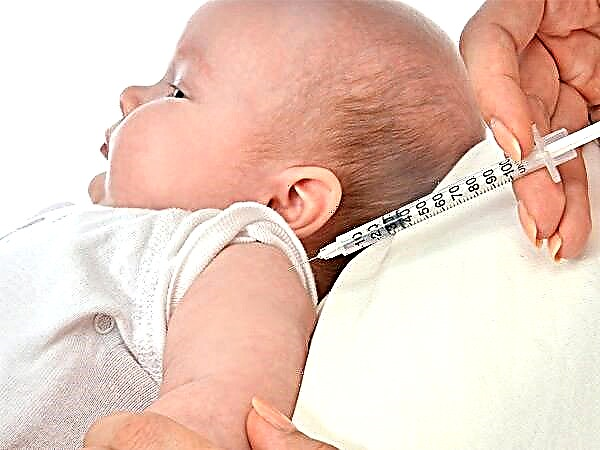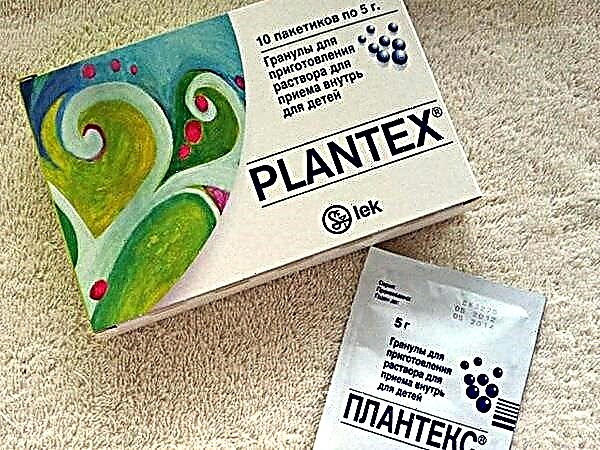
Synechiae in girls is a very delicate problem of early age. Many parents do not even realize that their daughter has a fusion of the labia. Therefore, such a diagnosis from the mouth of a pediatric gynecologist, who will examine a child at a medical examination when applying for a kindergarten or earlier, can frighten adults. Is it worth to be afraid of synechiae and how to treat them, we will tell you in this article.
What it is
Synechiae in girls is a fairly common phenomenon. Only on paper does medical statistics look optimistic, indicating that fusion of the labia occurs in 3-4% of babies. In fact, in the practice of a particular pediatrician, there are at least 25-30% of nursing girls and older babies who, to one degree or another, have clinical symptoms of this disease. It's just that not every doctor considers them serious and worthy of being included in the medical record, quite reasonably "writing off" them on the age characteristics of the girl's body.
Synechiae is a fusion of the labia. Large labia can grow together. But the connection of the labia minora is more common, usually in the lower third. Less often, they grow together along the entire length. And it is quite rare that the labia majora and the labia minora grow together.

More often, the disease does not cause inconvenience to the child. But with pathological fusion, when not only the entrance to the vagina is closed, but also the outlet of the urethra, concomitant inflammatory disorders may appear, which will bring the girl a lot of unpleasant sensations.
Such an unpleasant intimate problem is characteristic of girls from six months to 7-8 years old.


Usually at this age, puberty begins and the problem is solved by itself. The largest number of such diagnoses is made at the age of 1 year, when parents bring their daughter for a major medical examination, as well as at 2-3 years old, when documents are drawn up to the kindergarten. A visit to a pediatric gynecologist is mandatory.
Translated from Greek, the word "synechia" means "continuity, connection". Humanity has known about the disease for a long time, but it was described in detail only in the twentieth century. Until now, there are heated debates between doctors and scientists about whether synechia should be considered a disease at all, or whether it is enough to attribute it to the category of physiological conditions. The question is really controversial. Indeed, for most female children under the age of 7, synechiae is as natural as physiological phimosis in boys.

Causes of occurrence
The reasons for the fusion of the labia are not known for certain. But modern experiments and studies indicate the most likely connection between the development of synechiae and the production of sex hormones. A newborn girl has practically no sex hormones of her own, but there is an abundance of estrogen borrowed from her mother (female sex hormone). It provides the elasticity of the labia, which is why a newborn and a baby girl usually do not develop synechia for up to six months.
After 6 months, maternal estrogen runs out, and the baby does not have enough of her own. The labia ceases to be elastic, and under the influence of unfavorable factors, they can very easily join. These factors include:
- allergic reactions - their skin manifestations that affect the genital area. In this case, an inflammatory process occurs in the disturbed skin, and during healing, the labia are connected;


- inflammatory processes of bacterial origin - the mechanism of occurrence is the same. Bacteria that cause inflammation of the urinary tract can get on the genitals as a result of hygiene mistakes, for example, improper washing of a child;
- mechanical irritation of the genitals - if the child wears underwear and clothes made of synthetic fabric, then the likelihood of irritation and then healing with fusion is quite high;
- chemical irritation - if the child's linen is washed with aggressive detergents not intended for children, if the girl does not change her diaper often enough or wash her several times a day with soap;
- non-obvious reasons - a situation when synechiae are present, and the above factors were absent.


Revealing the cause as such does not play too much of a role in establishing the diagnosis of synechia. The medical approach and treatment of the problem does not depend in any way on the specific reason for the fusion.
By default, it is believed that absolutely every little girl has a predisposition to synechia, and the reasons are assessed comprehensively - all of the above factors.
Symptoms and Signs
Fusion can develop for several months, and sometimes it occurs in a matter of days. Usually this process is not felt by the child in any way. The girl's behavior does not change, she has no pain, itching, or discomfort. That is why it is usually impossible to detect synechia at the initial stage. An intimate "violation" becomes apparent when the fusion has already taken place.
The exception is cases when the labia grow together in its upper third, partially or completely blocking the urethra. In this case, each urination gives the child uncomfortable sensations, but due to the absence of sharp or severe pain, the child may not show others too clearly that something is bothering him. Attentive parents may notice that the girl, when urinating, pushes, shivers, blushes, begins to worry. But these symptoms will not be bright and specific, and therefore may well also go unnoticed.


Synechiae becomes apparent when a dense film forms between the labia. In the very middle of this septum, the so-called median stripe is noticeable - the same fusion zone. With the fusion of the labia minora, the entrance to the vagina is closed - by a few millimeters, by a third, half or completely. If there is a fusion of the large and small lips, then usually it is symmetrically observed on both sides. If the synechiae are complete, then it is impossible to see the entrance to the urethra.
Complicated synechiae may be accompanied by redness of the external genital organs, inflammation by the type of vulvitis or vulvovaginitis. There may be a vaginal discharge with a sharp and unpleasant sourish or purulent odor. This process is accompanied by painful sensations and severe itching, the child's behavior changes, anxiety grows, especially after each urination. The child's temperature may rise slightly only in the case of complicated synechiae. In all other situations, it is at a normal level, the child's well-being is good, appetite, sleep and synechia activity are not affected.


Diagnostics
If desired, parents can easily see the synechia on their own. This does not require special tools and devices: the film that connects the labia is quite clearly visible.
The first destination for home detection of adhesions in the genital area should be the office of a specialized doctor.
A pediatric gynecologist is a specialist who today can be found in almost every children's polyclinic.


At the appointment, the doctor will examine the child's external genitalia, assess the degree of adhesion and prescribe several additional tests that will make it possible to judge whether the problem is more physiological, or if we are talking about complicated synechiae. You will need to pass the following tests:
- sowing for urogenital infections;
- sowing to determine the presence of bacteria and their sensitivity to certain antibiotics;
- general blood and urine tests;
- ultrasound examination of the pelvic organs (rarely prescribed, only if the fusion is extensive and there are visual signs of inflammation).
If the doctor on a visual examination discovers an insignificant size of adhesions without signs of inflammation, then with a high degree of probability he will not prescribe additional studies.


The danger
In most cases, synechiae do not pose any danger to the girl's life and health. However, with complete fusion or overlapping of the urethra by adhesions, a closed space is created under the film, which accumulates both vaginal discharge and urine residues. Any enclosed space is an excellent breeding ground for various pathogenic and opportunistic bacteria. If you ignore this, then the inflammation will begin to "rise" higher, and the important reproductive organs of the child - the uterus, appendages, ovaries, will be affected.
In this way, complete and complicated synechiae are usually treated. The same cannot be said for all synechia. If the film does not cover the vagina or urinary tract, if there is no inflammation, it may well be left alone. The child is prescribed only systematic observation, because all doctors are well aware that 90% of synechiae resolve on their own by 7-8 years, when puberty starts. As soon as the level of sex hormones is sufficient, the external genitals will become denser, more elastic, and the fusion will disappear by itself.


Uncomplicated synechiae, which are the most common, do not affect the girl's further reproductive abilities, do not alter the labia, do not disfigure them.
Treatment
With synechiae, which do not create obstacles to the entrance to the vagina and the inlet of the urethra, and also do not cause inflammation, itching and burning, treatment is not required. It is enough to keep the situation under control by visiting a pediatric gynecologist twice a year, who will assess the degree of adhesion and dynamics. Treatment is required for girls who, after 8 years of age, the problem did not begin to be solved, as well as babies who, at an earlier age, have an adhesion process in the labia, causes unpleasant sensations, causes inflammation and prevents the release of vaginal secretions and urine.
Conservative measures
Treatment measures for synechiae always begin with sparing conservative treatment. There are no reasons for urgent surgery with this diagnosis. There is no need to hospitalize the girl, synechiae can be perfectly treated at home.


In order to compensate for the deficiency of the female sex hormone, an ointment that contains estrogen is prescribed. Usually Ovestin cream is used. The course of treatment is usually 5-6 weeks. The diagram looks like this:
- The first 14 days carry out external treatment of the labia "Ovestin" twice a day - in the morning and in the evening.
- The second 14 days, external treatment with this drug is carried out only once a day, for example, in the morning. In the evening, a regular baby cream or petroleum jelly is used for lubrication. You can also use sea buckthorn or peach oil.
- For the next week, use only oil or baby cream.
It is very important to apply Ovestin correctly. This should be done exclusively with your finger, and not with a swab or cotton swabs. The cream should not come into contact with the tissue adjacent to the adhesion; when applying it only to the adhesion site, press it lightly with your finger. This pressure is of great importance for the separation process.


After such a course, the result is assessed. With a positive outcome, synechiae are separated under the influence "Ovestin". If negative, no separation occurs. If it is doubtful, the separation occurs only partially.
With complete separation, a course is prescribed "Contractubex"... Ointment or gel "Contractubex" promotes the formation of a smooth and elastic tissue, prevents re-fusion. They lubricate the labia twice a day - in the morning and in the evening, applying a thick layer of gel or ointment.
Quite often you can find angry parental comments that "Kontraktubex" did not help the child with synechia. Experts believe that this is possible only if the drug was used incorrectly - at the initial stage of treatment, for example, even before the separation of the labia or with incomplete separation. A prerequisite for successful treatment with such a gel is complete preliminary separation of adhesions.


In the presence of an inflammatory process, the treatment will be somewhat different in its initial and final part.
Before you start separating the lips with Ovestin, you will have to treat external inflammation for several days. For this we recommend washing with a decoction of chamomile, calendula, without soap. The procedures should be carried out at least 3-4 times a day.
After each site of inflammation is smeared with Bepanten ointment. After the redness disappears, you can proceed to the course described above.
Sometimes treatment with "Ovestin" is supplemented with combined treatments of the fusion zone oil solution of vitamin A and methyluracil ointment... Usually one such procedure per day is added in a course of 5 days. Parents should not be afraid that at the very beginning of the course of conservative treatment, there may be a slight swelling in the area of the daughter's labia. This is a normal process and should not be canceled. Usually, a side effect in the form of a slight edema disappears after 3-4 procedures.


Operative intervention
If conservative treatment did not help or helped with a dubious result (it was not possible to completely eliminate the adhesions with medicinal ointments), an operation is performed to remove the film from the child's labia. Here it is imperative to warn parents - the number of gynecologists-"sadists" in Russia is off the charts. According to the old, still Soviet practice, when they did not stand on ceremony with synechia, the doctor may offer to separate the labia by hand, with a finger, in fact, simply breaking the connecting film. Indeed, a few decades ago, this is exactly what they did. But now the 21st century is in the yard, and therefore mothers and fathers should not subject their daughter to a painful procedure.
You only need to agree to a civilized separation operation... It is performed under local anesthesia and not with a finger, but with instruments. Everything happens quickly, painlessly. After the operation, appointed "Ovestin" course for 7-10 days, and then "Kontraktubex" to prevent relapse.
Even if done right the probability of re-splicing remains quite high. According to available statistics, it is about 25-30%.
If the doctor and parents took this fact with all responsibility and underwent a course of postoperative treatment, then the likelihood of recurrence of the problem decreases to 5%.


Prevention
Not so long ago it was believed that synechiae is necessarily a consequence of a violation of hygiene rules.
If a girl has a fusion, then her parents rarely washed her away.
Today, medicine has ceased to consider the hygienic factor as the main one in the prevention of this intimate ailment. However, hygiene was not discounted at all. Recommendations for the prevention of synechiae are useful for those who have suffered from this disease to prevent recurrence, and for those who do not want to admit the primary case:
- Allergenic foods should be avoided. If a girl has a tendency to an allergic reaction, this risk factor should be minimized.
- Give with care child of the first year of life medicines. An inadequate reaction to them, side effects of drugs are dangerous, in terms of the development of skin problems, including in the area of the external genital organs.
- To minimize the risks of bacterial infections of the genitourinary organs, which also lead to the development of adhesions, the girl should be washed from birth. only under running water, and not in a basin or bath. In this case, the adult's hand should move strictly in the direction from the pubis to the priest, and not vice versa.
- Use toilet soap (even baby) for washing the genitals of a little girl often not. It is quite enough to wash with soapy water (not with a bar of soap!) Once a day, during an evening swim. All washings during the day are carried out with ordinary running water.
- When washing, make sure that the soapy water did not get on delicate and vulnerable mucous membranes, and also did not penetrate the vagina - this is a sure way to chemical irritation, which can become a "launch pad" for the formation of adhesions.


- All things that come into contact with the skin of the tender intimate parts of a little girl should be washed only with hypoallergenic agents, which are specialized for children. After washing, they should be additionally rinsed, and in case of increased individual sensitivity of the skin, they should also be ironed with an iron.
- Clothes, panties, pajamas, bedding must be sewn from natural fabrics, without the use of synthetics and semisynthetics. There is no need to buy bright panties that have become so under the influence of textile dyes. It is better to give preference to plain white fabric.
- After active games, swimming in a river or pool, if the child gets wet, you need to rinse the genitals with water and change your daughter into clean panties. Heat in the room, stuffiness in the bedroom affect the increase in sweating. The genitals can also sweat. If the baby is sweating, she should be washed off with plain water and changed into dry underwear.
About what synechiae is and how to properly maintain hygiene in a girl, see the next video.



